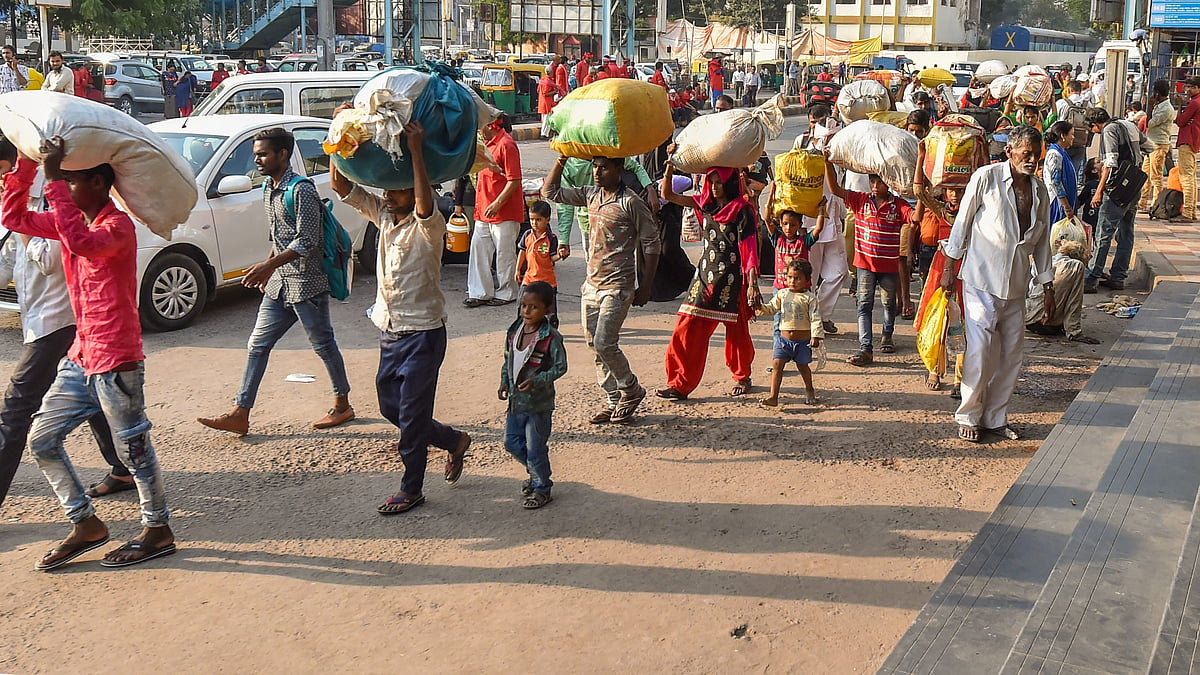Opinion
Gujarat violence: BJP govts at Centre, state cannot wash their hands off by blaming others
History is repeating itself in different ways. There is message for the current govts both at the Centre and Gujarat. They cannot wash their hands of by blaming rival political parties or individuals

As they can not be sent to Pakistan––or even Bangladesh––they are being forced to return to the states to which they belong. This is the predicament thousands of migrant labours from Uttar Pradesh and Bihar are facing in Gujarat. They are paying the price for the alleged crime committed by a person from Bihar.
But this may not be the first instance of any migrant labour committing any heinous crime anywhere in Gujarat. This might have happened in the past too. But the moot question is why this sudden outburst of violence in particular region of Gujarat.
The answer can be traced in the prevailing culture of branding people in the name of religion, country, region, state, caste etc and then inflicting collective punishment on them.
If any sporadic and isolated incidents occur anywhere one can attribute it to the handiwork of some people or group. But when the nature of violence is widespread it certainly means that some well organised group is behind such targeting of people of particular region. Not only that, it has often been observed that the perpetrators enjoy tacit approval of the powers that be.
Published: 10 Oct 2018, 9:25 AM IST
History is repeating itself in somewhat different ways. There is message for the present governments both at the Centre and Gujarat. They can not wash their hands of by blaming rival political parties or individuals. Hardly anyone either in Bihar and Uttar Pradesh or in Gujarat itself is going to buy their version. After all everyone is now aware as to who has the mastery in mob violence
For example, in neighbouring Maharashtra, Shiv Sena and its breakaway faction, the Maharashtra Navnirman Sena, used to adopt this tactic.
Incident like alleged rape of 14-months-old baby in Gujarat––which triggered the recent violence––was just an excuse to exploit the anger whipped against outsiders since long.
As the rich do not lead the violence––they only foment or support from behind––the tragedy is that it is the poor and unemployed lot who are pitted against the poor migrant labours. Those engaged in blue collar jobs are seldom targeted in such a way.
Unlike Marwaris––who are spread throughout India––the number of Gujaratis and even Maharashtrians settled in north India is very small. So there is little fear of being targeted in the retaliatory violence in Bihar or UP.
The post-demonetisation slowdown in economy might have worked as fuel in the flame in Gujarat, where Patels in general have been feeling quite restive. When large scale violence and killings took place in the state in August 2015 it was highlighted that as high as 50,000 small and medium scale industries are closed in Gujarat. The note-ban, which took place 15 months later further aggravated the situation leading to the closure of more industries.
One should not forget that there is some similarities in Bihar and Gujarat. If the greatest Gujarati, Mahatma Gandhi, chose Bihar as the first place to launch his struggle against the British 101 years ago, both the state had witnessed widespread students’ movement in 1970s, It started in December 1973 in Gujarat and March 1974 in Bihar.
Mind it the students went on warpath after the economy of the country went out of control following the four times increase in oil price after the Arab-Israel War of October 1973.
History is repeating itself in somewhat different ways. There is message for the present governments both at the Centre and Gujarat. They can not wash their hands of by blaming rival political parties or individuals. Hardly anyone either in Bihar and Uttar Pradesh or in Gujarat itself is going to buy their version. After all everyone is now aware as to who has the mastery in mob violence.
Published: 10 Oct 2018, 9:25 AM IST
Follow us on: Facebook, Twitter, Google News, Instagram
Join our official telegram channel (@nationalherald) and stay updated with the latest headlines
Published: 10 Oct 2018, 9:25 AM IST